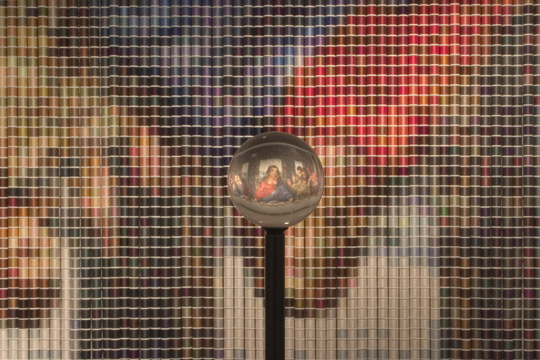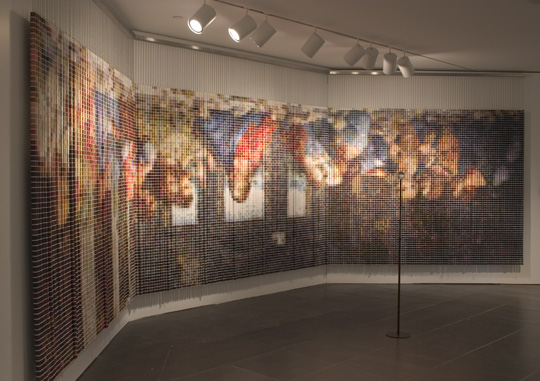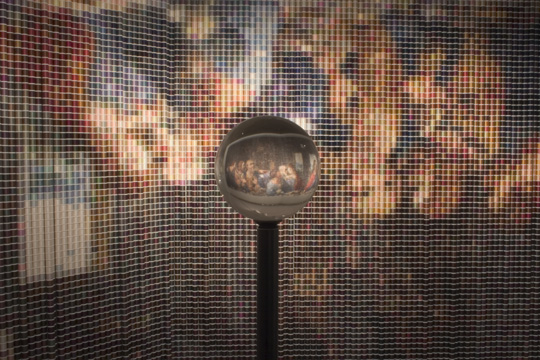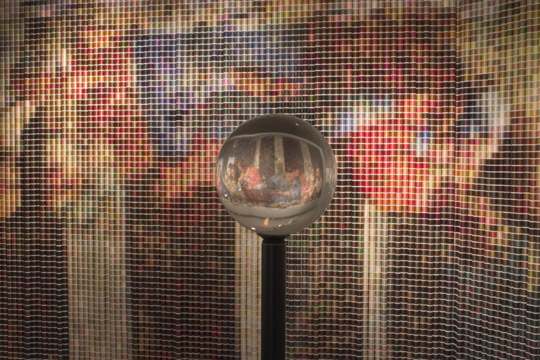After
The Last Supper, 2005
20,736 spools
of thread, aluminum ball chain and hanging apparatus,
clear acrylic viewing sphere on metal stand
85"h x 29'w







Description: a life sized rendering of Leonardo da Vinci's The Last Supper constructed from 20,736 spools of thread strung onto aluminum ball chain. When seen with the aid of optical devices, the spools of thread coalesce into realistic images of Christ and his disciples..
When seen with the naked eye, the spools of thread appear as an abstract arrangement of multi-colored blocks/3D pixels, further abstracted by the fact that The Last Supper imagery is upside down and backwards. The clear acrylic viewing spheres rotate the imagery 180 degrees back to the correct orientation and condense the individual pixels/spools of thread into recognizable images. In addition, the spheres offer monocular views of the work, accentuating the illusion of 3 dimension as it exists in flat paintings. Leonardo da Vinci understood that the illusion of 3D in paintings was derived from monocular, not binocular, vision.The original mural is highly symmetrical, with the right eye of the Christ figure as the single, centered vanishing point, from which all compositional elements project. In my rendering, the vanishing point, also Christ's right eye is slightly lower than eye level. Because the spheres rotate the imagery 180 degrees, viewers have the illusion of looking up at the image, replicating the orientation of viewers to the original mural. The two 45 degree angles of the trapezoid replicate the illusion of 3D space in the painting, referencing the site-specific nature of the original mural.
Back to Home Page